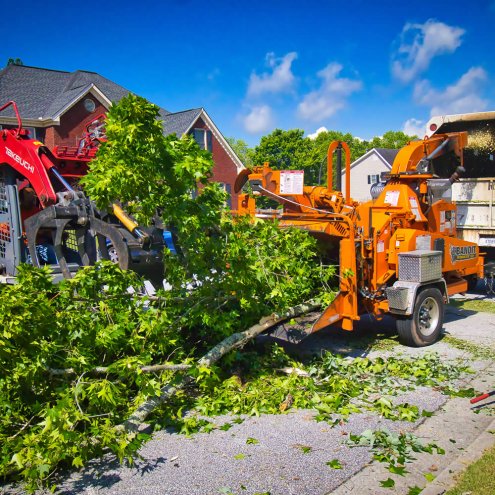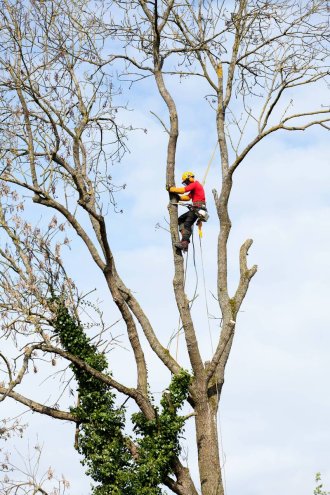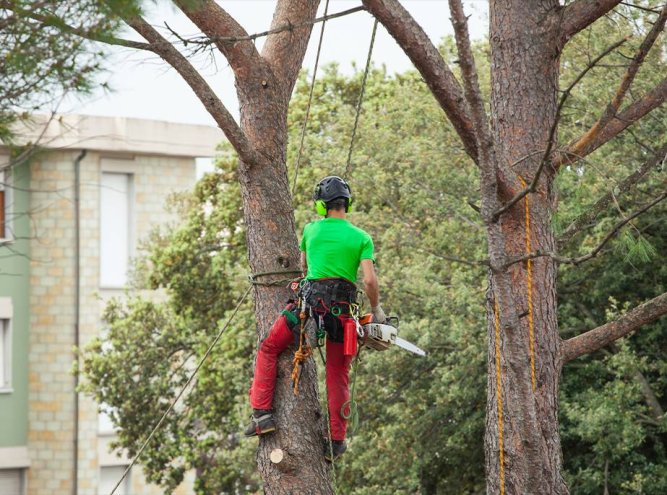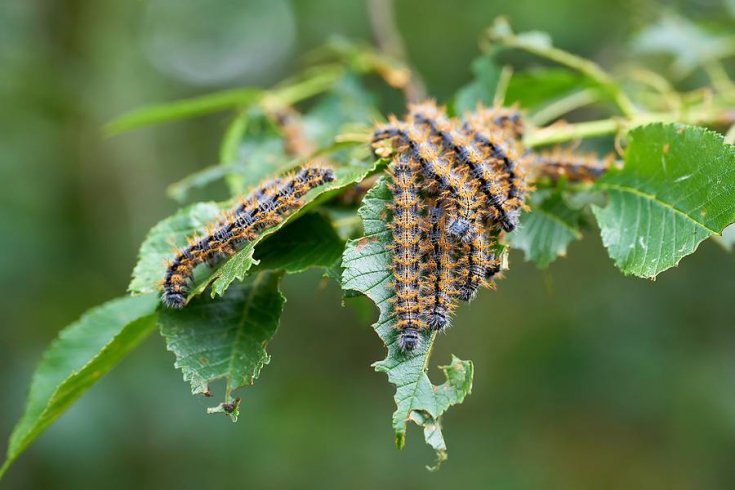Menu
Towering, intricate, and surprisingly sensitive, trees are among the most impressive living things on Earth. For Metro Atlanta property owners, trees are a central part of the landscape. These functional, living ornaments offer beauty, shade, cleaner air, and even increase property value. When it comes to caring for trees, especially trimming, there's a little more to the job than just grabbing some shears and going to town on overgrown limbs.

Tree trimming is both a science and an art. Done correctly, it keeps trees healthy, safe, and looking their best. One of the most common mistakes people make, however, is trimming at the wrong time. The right timing can depend on the species of the tree, the season, the weather, and even the time of day.
In this brief article brought to you by your local tree company, Driscoll Tree Service, we offer an abridged guide on when and why to trim different types of trees.
Let’s start with the most obvious factor: the seasons. Trees respond to changes in temperature and daylight, so the time of year dramatically affects how a tree reacts to trimming.
Wet or humid conditions can increase the chance of disease entering fresh cuts. This is why we say tree trimming during dry weather is best. Here in Metro Atlanta, where summers can be steamy and thunderstorms are frequent, timing your tree work for dry stretches makes a difference.
Moreover, avoid trimming during extreme heat waves. Just like us, trees get stressed when it’s too hot - and trimming adds extra strain.
As for the time of day, early morning or late afternoon is preferable, especially during the warmer months. Midday sun can dry out fresh cuts too quickly, while cooler parts of the day give the tree time to recover more gently.
Different tree species have different needs. Here are a few common trees in the Atlanta area and the best times to trim them:
With so many variables - species, season, weather, technique - it’s easy to see why professional tree service is often the smartest move. Whether you’re prepping your fruit trees for spring, trying to shape an overgrown maple, or cleaning up storm-damaged limbs, Driscoll Tree Service is available with quality and even emergency service.
We are proud to offer a wide range of services from tree planting and trimming to tree removal services. Call or message Driscoll Tree Service to speak with a member of our team today.


What is Tree Cabling? Trees are vital to our environment, providing shade, beauty, and ecological benefits. However, sometimes trees develop structural weaknesses that cause dangerous situations or loss premature tree removal emergencies. With that in mind, tree cabling allows property…
Read More
The Dangers of Ignoring Tree Removal Trees are not only nature’s exquisite creations but also valuable assets that enhance the beauty and character of your landscape. Their presence provides shade, improves air quality, and contributes to the overall aesthetics of…
Read More
Summer Pruning Tips for Cherry and Apricot Trees Tree pruning is vital for optimum health and longevity. It is the equivalent of a haircut, as it enhances aesthetics and prevents diseases. Unfortunately, many homeowners prefer handling yard maintenance alone, which…
Read More
Fall Lawn and Landscape Care Tips As the vibrant colors of summer fade and fall begin to take over, it's essential to focus on lawn and landscape care. Fall is crucial for yard care as you prepare for the colder…
Read More
Seasonal Tree Care Tips: Summer Edition As summer kicks into full gear, trees in your yard require special attention to stay healthy and vibrant. As a trusted tree care company, Driscoll Tree Service provides routine inspections and maintenance to protect…
Read More
Harmful Pests for Your Trees Trees are beautiful, essential for our environment, and vulnerable to various pests that can cause significant damage. These pests can compromise the health and longevity of trees, leading to their decline or even death. Tree…
Read More
Signs It's Time to Trim Your Trees Trees play a vital role in our environment, offering many benefits, including fresh air, shade, and curb appeal. However, trees require proper care and maintenance to thrive. Regular trimming is one of the most crucial…
Read More
The Advantages of Landscaping for Real Estate Most people assume landscaping entails levelling the terrain of a property to enhance curb appeal. While this is partially true, there’s more to it. Whether it’s including plants, paving, gardening or adjusting visible…
Read More
Pruning Mistakes That Invite Pests Into Your Home Proper pruning keeps trees healthy, encourages strong growth, and grabs the attention of prospective buyers and tenants. When pruning is done hastily or incorrectly, however, it can open the door to much…
Read More
How to Prune Fruit Trees Trees are an excellent addition to any landscape. We get a lot of benefits from trees, especially fruit trees. Every homeowner with an orchard wants to enjoy the fruits from their trees, but first, it…
Read More